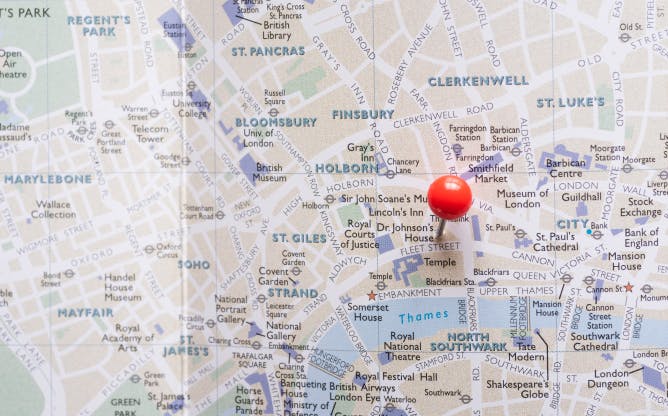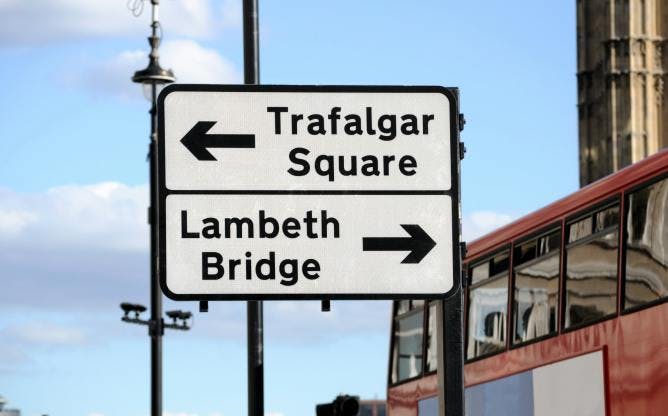
When it comes to the practical test, there are plenty of things that learners can do to increase their chances of passing. Taking lessons with a local driving instructor, for example, will ensure you're familiar with the local area. Practising outside of lessons with friends and family is also a surefire way of building up your muscle memory. But what about learning the driving test routes?
We're going to walk you through everything there is to know about driving test routes—from what they are, to where learners can find them, to whether you truly need them to pass the driving test.
What are driving test routes?
When it comes to the driving test, examiners aren't simply allowed to take students on a route of their choosing around the test centre. They're supposed to follow a route laid out by the DVSA. Each driving test centre will have at least a dozen potential test routes at their disposal—the examiner will be given one at random for each practical.
Driving test routes will start at the test centre, before moving further afield in order to incorporate a wide range of road types and traffic conditions into the practical. Here are a few examples of features that are likely to show up on your test route:
- Residential and urban areas: testing your ability to move between different speed and traffic conditions safely and confidently.
- Challenging local road types: from tricky junctions to one-way systems to multi-lane roundabouts.
- Local dual carriageways: testing your ability to switch to high-speed roads.
Whilst test routes will vary slightly, they will all try to include the above features (and then some!), in order to test how ready a learner is to take to the roads unsupervised.
So, what exactly do these test routes look like? You can get a rough idea by taking a look at the example in the table below…
Route Number
Driving Test Centre
Clifton Rd
Abingdon Rd
Marsland Rd
Derbyshire Rd
Trinity Rd
Derbyshire Rd
Northenden Rd/Old Hall Rd
Baguley Rd
End of road left
Fellpark Rd
Brent Rd
Sale Rd/Wythenshawe Rd
Palatine Rd
Moor End
Longley Lane
Sharston Rd
Altrincham Rd
Brooklands Rd
Hope Rd
Driving Test Centre
Route Number
Driving Test Centre
Clifton Rd
Abingdon Rd
Marsland Rd
Derbyshire Rd
Trinity Rd
Derbyshire Rd
Northenden Rd/Old Hall Rd
Baguley Rd
End of road left
Fellpark Rd
Brent Rd
Sale Rd/Wythenshawe Rd
Palatine Rd
Moor End
Longley Lane
Sharston Rd
Altrincham Rd
Brooklands Rd
Hope Rd
Driving Test Centre
In your actual driving test, you'll follow the examiner's directions for around 20 minutes or so. Once you've completed this part, you'll move onto the independent driving section. At which point, you'll have to follow the test route using directions from a sat nav. (Unless you're one of the 1 in 5 learners asked to follow traffic signs instead.) If you'd like a more in-depth look at the structure of the practical, head on over to our guide to what happens in the driving test.
If you deviate from your test route at all, the examiner will give you verbal directions to get you back on track to the original route. So, you don't have to worry if your bad memory or test day nerves get the better of you!
Where can I get my driving test routes?

We'll rip the plaster off quickly here. You won't be able to find your official driving test routes anywhere. In the past, routes were available online for pretty much anyone to find. In 2010, however, the DVSA stopped publishing its routes.
Wondering why the DVSA would do such a thing? Well, it was a move designed to actually help learner drivers. Before the ban on publishing test routes, some driving instructors would simply take their students around official routes and have them memorise as much of them as possible. This, unfortunately, had a hugely negative impact on their learning experience. It resulted in learners:
- Spending most of their driving test trying to remember which road was supposed to come next on the route (instead of concentrating on the conditions of the road).
- Panicking if the driving examiner ended up deviating from the routes they had memorised, e.g., due to closures or unexpected congestion that could cause delays getting back to the test centre.
- Not getting to know any road types or features that were outside of their test centre's routes, e.g., multi-lane roundabouts, one-way systems and other tricky junctions.
Driving test routes are not reflective of real-life driving conditions. Sticking to them means that you're limiting yourself to a specific range of road types and conditions within your local area. Once you pass your test and head further afield unsupervised, you'll end up completely stumped when facing an unfamiliar road type.
By stopping the publication of test routes, the DVSA helped make the driving test far more realistic. Their action also helped push instructors to give learners the skills and confidence necessary to drive safely and independently, no matter where they're driving.
If you spend just 5 minutes searching for driving test routes online, you'll likely find a dozen sites offering them for a fee. This is where you need to be extremely careful! In most cases, these routes will either be fake or the old routes that the DVSA used to publish before 2010.
If you're still curious about driving test routes, we might be able to help you out a bit. We offer essential test guides for all of the practical test centres we cover. In these guides, we offer sample driving test routes to download where available. Simply head on over to our practical test centres page and locate your chosen test centre. Before you do, however, we'd like to emphasise that these routes are not official. They should be used as a rough guide only.
Why driving test routes don't actually matter…
It might still be hard for you to believe, but driving test routes aren't all that helpful. Even if you had access to your local test centre's official routes, it still wouldn't mean you'd have a 100% chance of passing. If you're still not convinced, however, we've got a few reasons that will help change your mind...
Road conditions always change
Let's imagine, for a moment, that you managed to get your hands on all of the test routes used at your local test centre. You've even taken the time to memorise them all. So, your test starts and you know within minutes which route you're on. Unfortunately, out of nowhere, the examiner asks you to make a turn that doesn't feature on your route. It turns out that the road that you should have taken is blocked due to roadworks. And just like that, your confidence is replaced by fear of the unknown.
Road and traffic conditions are always changing, which is why some examiners often have to switch things up a bit in order to make sure the driving test doesn't overrun. So, whilst test routes might seem inflexible on paper, when it comes to real-life driving, they're a bit more malleable.
You need to be focused on the right things
There's a lot going on during the driving test. Not only do you have to listen closely to your examiner's instructions, or directions from a sat nav, you've also got to pay close attention to your surroundings—keeping an eye out for potential and developing hazards. Though it's doable, it's still a lot to process.
If you start throwing test routes into the mix, however, a careful balancing act can turn into utter chaos. Are you going to be able to spot hazards if you're spending your entire test concentrating on which road you're supposed to be heading down next? The answer's probably no. Not only can this lead to you picking up driving test faults, it could lead to a serious accident!
You need to learn to drive, not to follow a single route
The aim of learning to drive isn't simply to pass the driving test. It's to become a safe and confident driver who is capable of adapting to different road and traffic conditions independently. If all you're doing during your lessons is driving around test routes, however, you're completely hindering your learning experience.
Whilst it is important to familiarise yourself with your local area, you shouldn't get too used to driving on the same roads. You need to be comfortable driving around unfamiliar areas. If you've got the skills, it shouldn't matter if you recognise the roads or not.
How do I prepare for my driving test?

Forget about driving test routes. Instead, focus on taking driving lessons with a local, DVSA-approved instructor. Though they won't hand you test routes to memorise, they will take you around the roads that are favoured by driving examiners. That's because, if they're experienced enough, they'll have accompanied learners on their driving tests—giving them the chance to see test routes firsthand.
Of course, a good instructor won't just anchor you to your local area. They'll also take you out further afield in order to test your skills against unfamiliar roads that won't crop up on your practical—making sure you're ready to face anything once you've passed the test.
Learning to drive with PassMeFast
If you're looking for a local, DVSA-approved instructor to help you become a confident and independent driver, PassMeFast is the driving school for you. Our instructors won't be teaching you to simply memorise and follow test routes. Instead, they'll be showing you how to adapt to all types of road and traffic conditions—something that will be beneficial for passing the test and, more importantly, taking to the roads unsupervised.
At PassMeFast, you have the option to take things at an intensive or semi-intensive pace, depending on your overall availability and preferences. Our Booking Agents will take care of all the admin, so you can concentrate entirely on building up your skills and preparing for the driving test. We'll even throw in a fast-track practical test so you don't have to deal with long waiting times. With us, you'll be able to get rid of those L plates in no time!
Subscribe for driving advice, offers & more
We'd love to let you know about our courses, news and offers via email. You may unsubscribe at any time.
Star Genie Limited trading as PassMeFast. Company number 10093359
Copyright © 2024 owned by Star Genie Limited
PassMeFast, Blue Tower, MediaCityUK, Salford, M50 2ST

